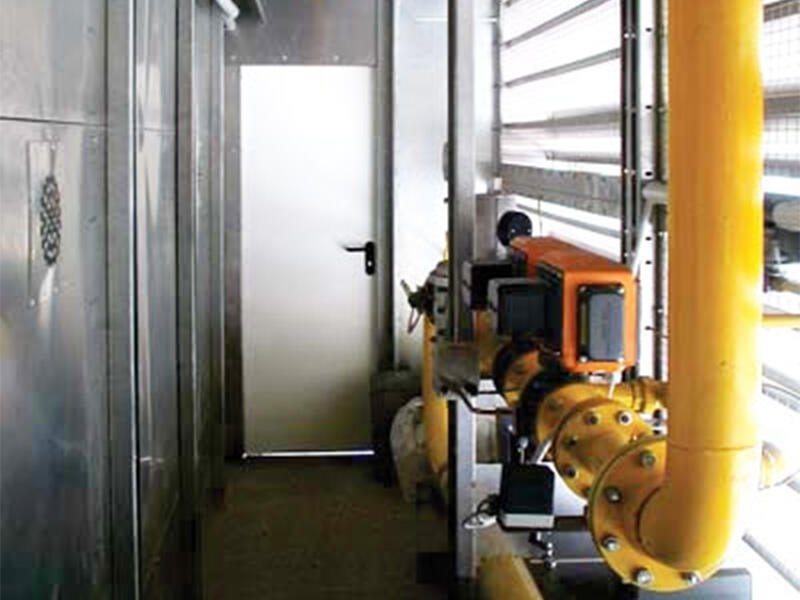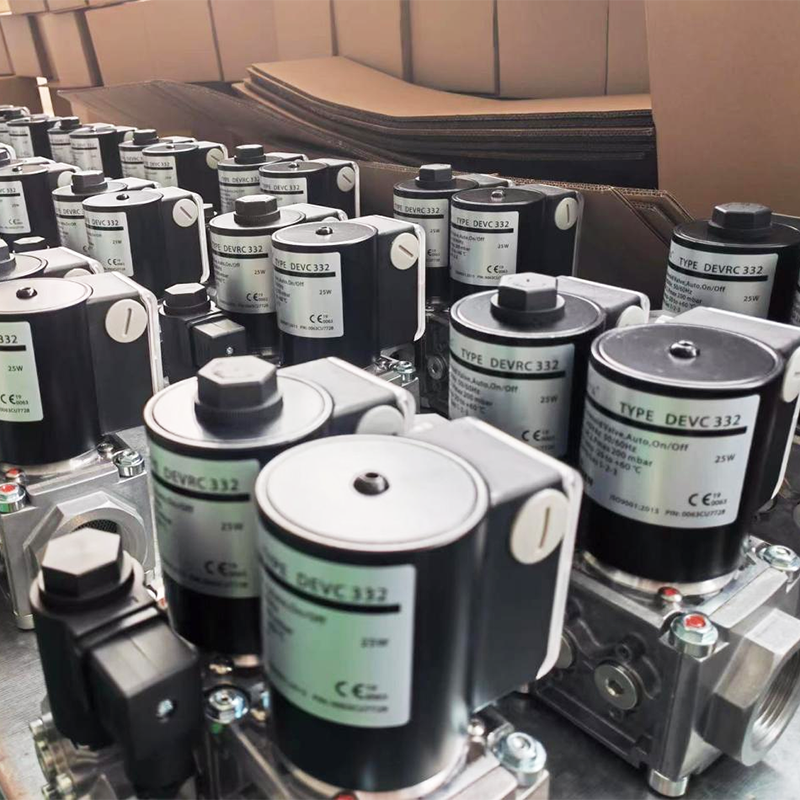The Science Behind Electromagnetic Fields
At its core, induction heating works through electromagnetic induction principles. When there's a changing magnetic field near conductive materials, it creates those swirling electric currents we call eddy currents inside them. The main parts involved here are pretty straightforward really: an induction coil that creates the magnetic field, plus whatever metal piece needs heating acts as the actual load for the system. How deep this magnetic field penetrates into the material depends on several factors including what kind of metal it is, how thick or shaped it happens to be, and also the frequency at which our current runs. Most industrial setups pick certain frequencies after running tests specifically for each type of metal they work with. This helps get the best possible heat distribution throughout the material while keeping everything efficient enough to run cost effectively in real world applications.
Eddy Currents and Resistive Heating Principles
Eddy currents form when a changing magnetic field creates circular electric currents inside conductive materials, which then generates heat in the metal. The heat comes from what's called resistive heating since these circulating currents meet resistance along their path, turning electricity into heat energy. Studies keep showing induction heating beats out conventional techniques pretty much every time, offering quicker results and better control over temperature distribution. Plus, it heats only specific spots without needing physical contact between components. For this reason, many manufacturers find induction heating systems perform much better, particularly in situations where getting consistent results matters most for production quality.
Key Components of Induction Heaters
Induction Coil Design Basics
How an induction coil is designed plays a big role in determining how well an induction heater works overall. There are several shapes available for these coils including round ones and spiral shaped ones too. The shape matters because it changes how the heat spreads throughout whatever material needs warming up. Round coils tend to work best when we need even heating all around something, whereas those spiral shaped coils are generally better at targeting specific areas that need extra warmth. Most manufacturers go with copper for building their coils since it conducts electricity and heat so efficiently compared to other materials. This helps cut down on energy waste which saves money in the long run. Engineering guides from industry organizations usually contain recommendations about what kind of coil design makes sense for particular jobs. These technical documents give practical advice on adjusting coil configurations to get just the right amount of heating power needed for everything from small scale operations to large manufacturing plants.
Power Supply and Frequency Control
Induction heaters need good power supplies to generate those specific frequencies that actually work on whatever material needs heating. The frequencies can go anywhere between about 1 kHz all the way up to several MHz, depending on what kind of material we're dealing with and how thick it is too. Getting the right frequency matters a lot since this controls two things at once: how fast something heats up and how far down into the metal those eddy currents travel. Lower frequencies tend to get deeper into the material while higher ones stay near the surface, which makes them great for jobs where just the outer layer needs hardening. Engineers know this stuff inside out and spend plenty of time tweaking these settings because getting it right means saving energy and making sure parts come out exactly as needed for various manufacturing applications across industries.
Industrial Applications of Induction Heaters
Replacing Gas Burners in Boiler Systems
Induction heaters offer something new compared to those old gas burners we see on boiler systems these days, and they bring real advantages for both the environment and workplace safety. No more having to store fuel right there at the site, plus way fewer emissions from burning stuff means cleaner air around the facility. People who actually run these systems report better conditions overall when switching over. Some companies have saved thousands on fuel expenses after making the change, and operators find it much easier to manage temperature settings precisely during production runs. For big manufacturing plants especially, this kind of upgrade makes good business sense too.
Metalworking and Manufacturing Processes
Induction heating has become increasingly popular across different metalworking processes including forging, hardening, and annealing because it brings so many advantages to the table. The technique actually improves how strong and durable materials become while cutting down on time spent in production cycles, something manufacturers have noticed when looking at their performance metrics. A number of shops that switched to this system report better bottom lines within months after installation. For small fabrication businesses especially, getting more parts made faster without compromising quality makes all the difference. That's why more and more shops are making the switch despite upfront costs, seeing real value in what induction heating can do for their operations over time.
Maintenance of Boiler Burner Parts
Keeping boiler burner parts in good shape matters a lot, and induction heating has become pretty useful for this kind of maintenance work. With induction heating, technicians can fix things fast without messing up other components, which is great when dealing with delicate machinery. This method makes taking apart stuck parts much easier than traditional approaches, cutting down on how long systems need to be offline and keeping operations running smoothly. Looking at real world data, companies that switch to induction heating often see money saved over time because they spend less on replacements and face fewer unexpected shutdowns during production cycles.
Advantages Over Traditional Heating Methods
Energy Efficiency vs. Wholesale Gas Burners
Induction heating really shines when it comes to energy efficiency, with many systems running above 90% efficient. The reason? It transfers heat straight into materials without wasting much along the way, something regular gas burners just cant match. Looking at what manufacturers are saying, there's clear evidence that induction heaters consume far less energy than those old school gas burners we've been using for decades. Companies switching to induction tech typically see their fuel costs drop pretty fast. And let's not forget about the bottom line benefits too. Factories across different sectors report cutting down their monthly energy bills after making the switch, which makes these systems much more financially attractive in the long run.
Precision Control for Industrial Boiler Burners
Induction heating brings something really special to the table when it comes to controlling temperatures in industrial boiler systems. With this technology, manufacturers get much better control over heat levels, which means products come out consistently good quality while wasting far less raw materials during production. What makes induction heating so valuable is that it works well alongside those modern monitoring systems we see everywhere now. These systems keep track of everything in real time, making sure the heating stays exactly where it needs to be throughout the whole process. A bunch of factory floor reports actually show pretty clearly that plants switching to induction heating tend to see fewer defects and more uniform results across their product lines. For anyone working in sectors where temperature matters down to the degree, like food processing or chemical manufacturing, getting this kind of precise control makes all the difference in day to day operations.
Safety and Operational Considerations
Reducing Risks in High-Temperature Environments
Induction heating really boosts safety in those hot industrial settings where workers deal with extreme temperatures daily. Think about all those old fashioned gas burners people used to rely on - there was always the risk of fire outbreaks or worse, gas explosions if something went wrong. Induction systems eliminate most of these dangers because they don't involve open flames at all. The numbers back this up too; studies show workplaces switching to induction tech see way fewer incidents compared to when they were running on traditional methods. For companies where worker safety is a top concern, making the switch makes total sense. And it's not just about installing the equipment either. Proper training matters a lot too. Workers need to understand exactly how these systems function so they can spot problems early before anyone gets hurt in situations where mistakes could be catastrophic.
Compliance Standards for Industrial Equipment
For induction heaters to work safely in factories and workshops worldwide, they need to follow all sorts of international safety rules and performance benchmarks. Standards like ISO 9001 are just one part of this picture, mandating that makers hand over proper paperwork proving their machines actually meet what the specs say. The whole system relies heavily on regular checkups and fresh certifications to keep things running safely. Without these checks, there would be real risks involved with using induction heating technology. When companies stick to these guidelines, workers get peace of mind knowing their equipment won't fail when it matters most. That's why so many manufacturing plants trust induction heating systems day after day for accurate temperature control while staying within regulatory limits.



